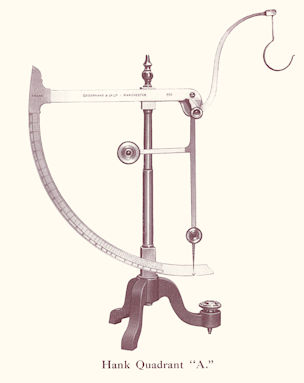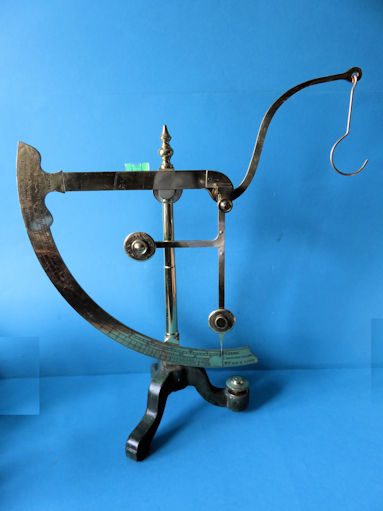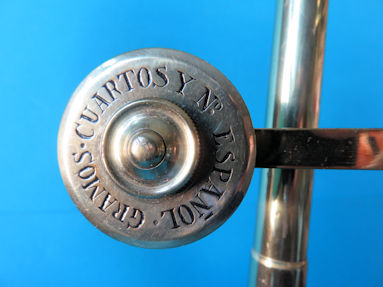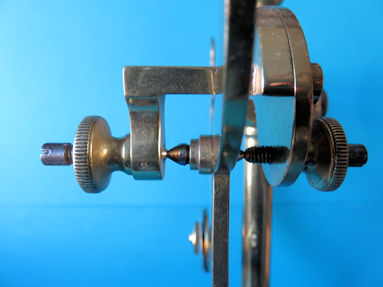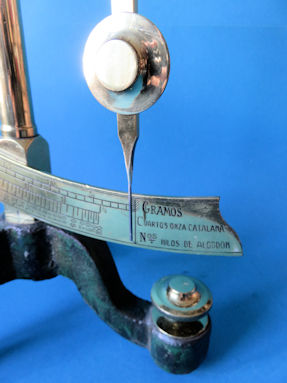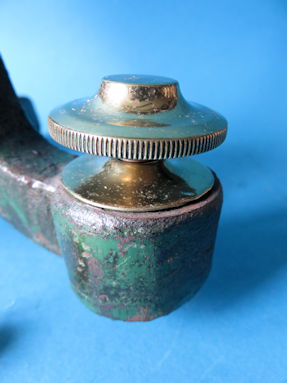
the front of the repaired Goodbrand yarn balance
This large brass yarn balance stands on a cast iron tripod. There is no name or logo of the maker, yet it is unmistakably a scale made by Goodbrand & Co. Ltd., of Manchester in England. Walter Goodbrand started a business around 1860s with Thomas Holland under the name Goodbrand and Holland. From 1887 the name Goodbrand & Co. was also used. From 1897 the company continued without Thomas Holland until probably 1951 as Goodbrand & Co. Ltd.. During the First World War 112 Pounder bombs, guns and hand grenades were also made. The company employed 84 men and 30 women at that time.
When purchased, the unit is missing a suspension hook for the cotton to be weighed, the weighing arm and the scale frame are bent, and there is an almost complete crack in the long counterweight arm. With the necessary caution the frame and the weighing arm were put back in the desired planes. I made the crack to a complete break and then tried to glue the parts together, that unfortunately turned out to be only temporary. A second repair attempt with soft solder and a brass splint plate proves sufficient. Presumably the short bent arm on which the cotton hook is supposed to be is also bent downwards in the plane. Looking at the picture from the catalogue the short arm does indeed seem bent. I bent the short arm upwards so that the cotton hook suspension point is again the highest point of the arm of the yarn balance at rest. Whether this correction of the geometry is the right one remains to be seen. Where each counterweight is supposed to be remains unclear to me. The screws do not fit well in the screw holes. The thread size is not a standard metric size, I have not changed anything.

the back of the repaired Goodbrand yarn balance



